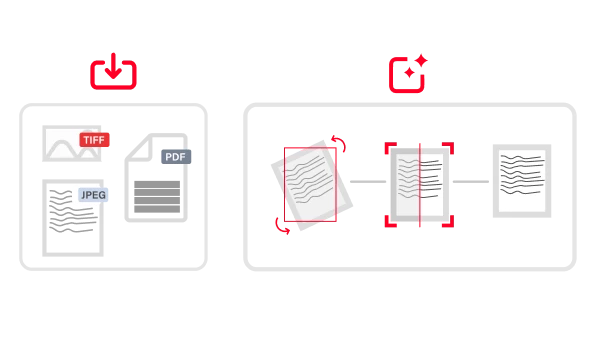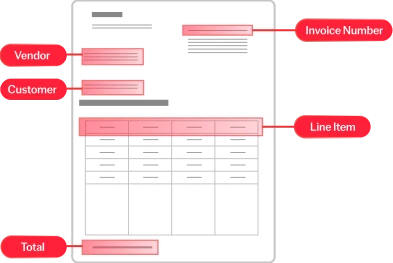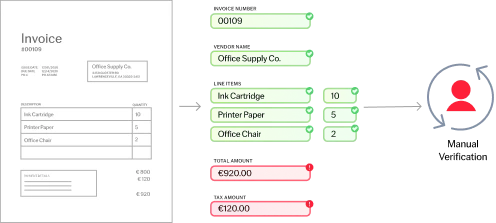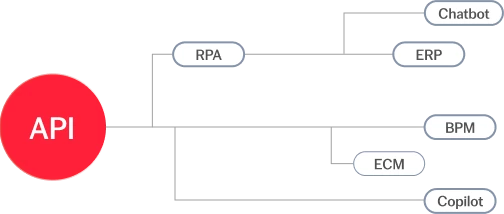
Human-in-the-loop verification
Enhance decision accuracy with human-in-the-loop (HITL) verification


The perfect blend of AI and human insight
HITL verification combines human expertise with automated processes to ensure AI system decisions are accurate and aligned with business goals. By integrating human reviewers at critical decision points, this approach enhances precision, reduces errors, and builds trust in AI-driven workflows.
Human oversight plays a key role in validating AI results, ensuring reliability and acting as a crucial safety net for high-stakes tasks where errors can be costly or sensitive. Additionally, the input from human experts contributes to continuous learning and model optimization, enabling the AI to improve over time and adapt to evolving business needs.

Higher precision
Humans verify AI-driven insights, minimizing false positives or negatives.

Operational efficiency
Streamline processes by delegating repetitive tasks to AI and reserving human input for complex decisions.

Increased stakeholder trust
The combination of automation and human review assures stakeholders of reliable outcomes.

Scalability with reliability
Leverages human expertise strategically to manage increasing data volumes without sacrificing accuracy.

Continuous learning and model optimization
AI systems evolve through ongoing data input and human feedback, ensuring consistent improvement and adaptability.

Accelerated review cycles
An out-of-the-box manual verification UI and workflow promote efficiency by providing a streamlined interface for human experts to quickly review and validate AI-processed data.
How HITL verification works
HITL (Human-in-the-loop) verification plays a crucial role in the IDP pipeline by addressing edge cases, ensuring accuracy when automated systems encounter uncertain or complex data, or for resolution when pre-defined validation rules are not met.
- Automated analysis
- Human intervention
- Feedback loop
Automated analysis
AI systems process large volumes of data, flagging cases that require further attention.
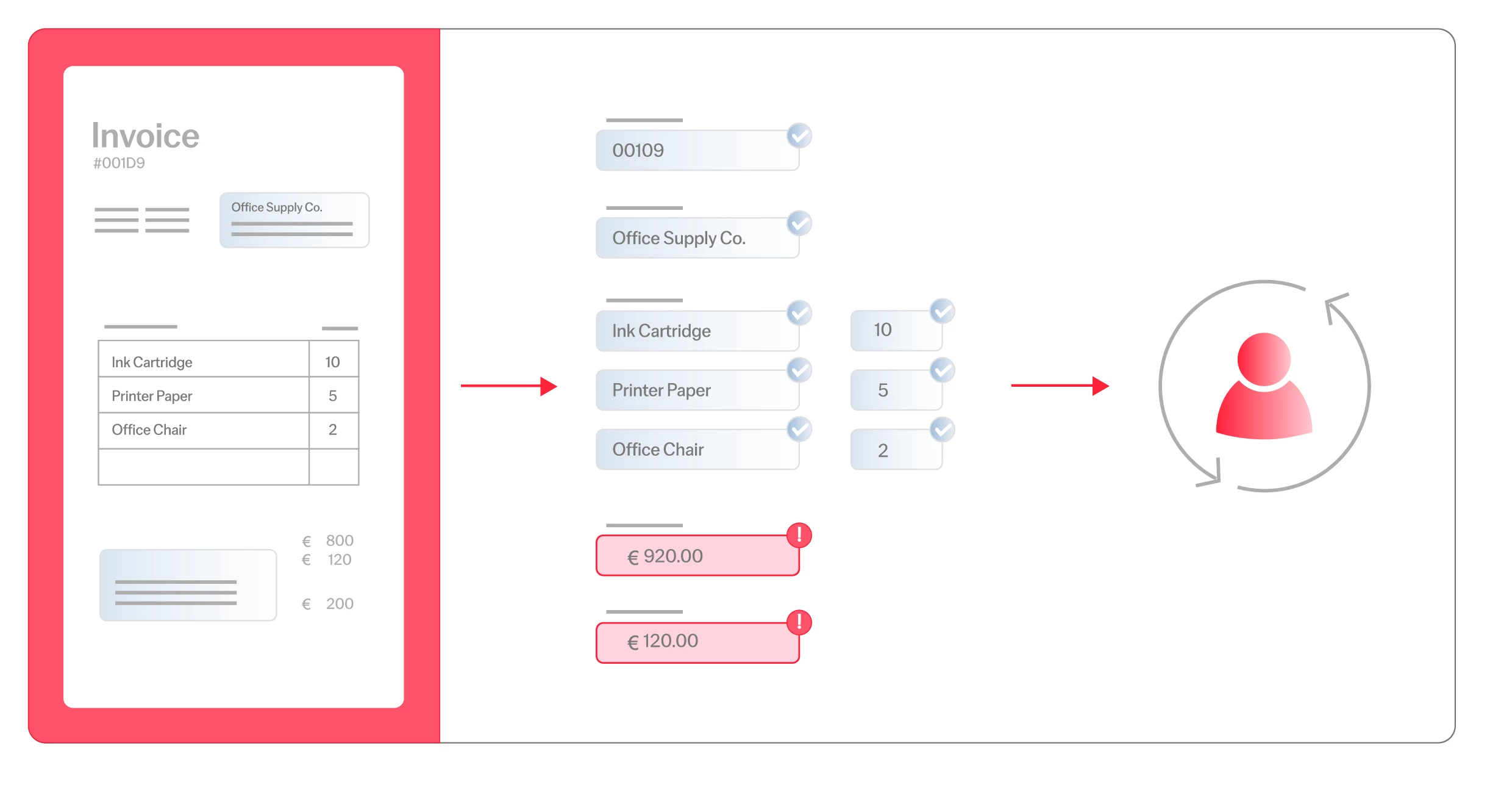
Human intervention
Subject matter experts review flagged data, ensuring alignment with business objectives and accuracy standards.

Feedback loop
Expert insights are fed back into the AI to improve its learning and future decision-making. This cyclical process ensures continuous improvement and consistency in outcomes.
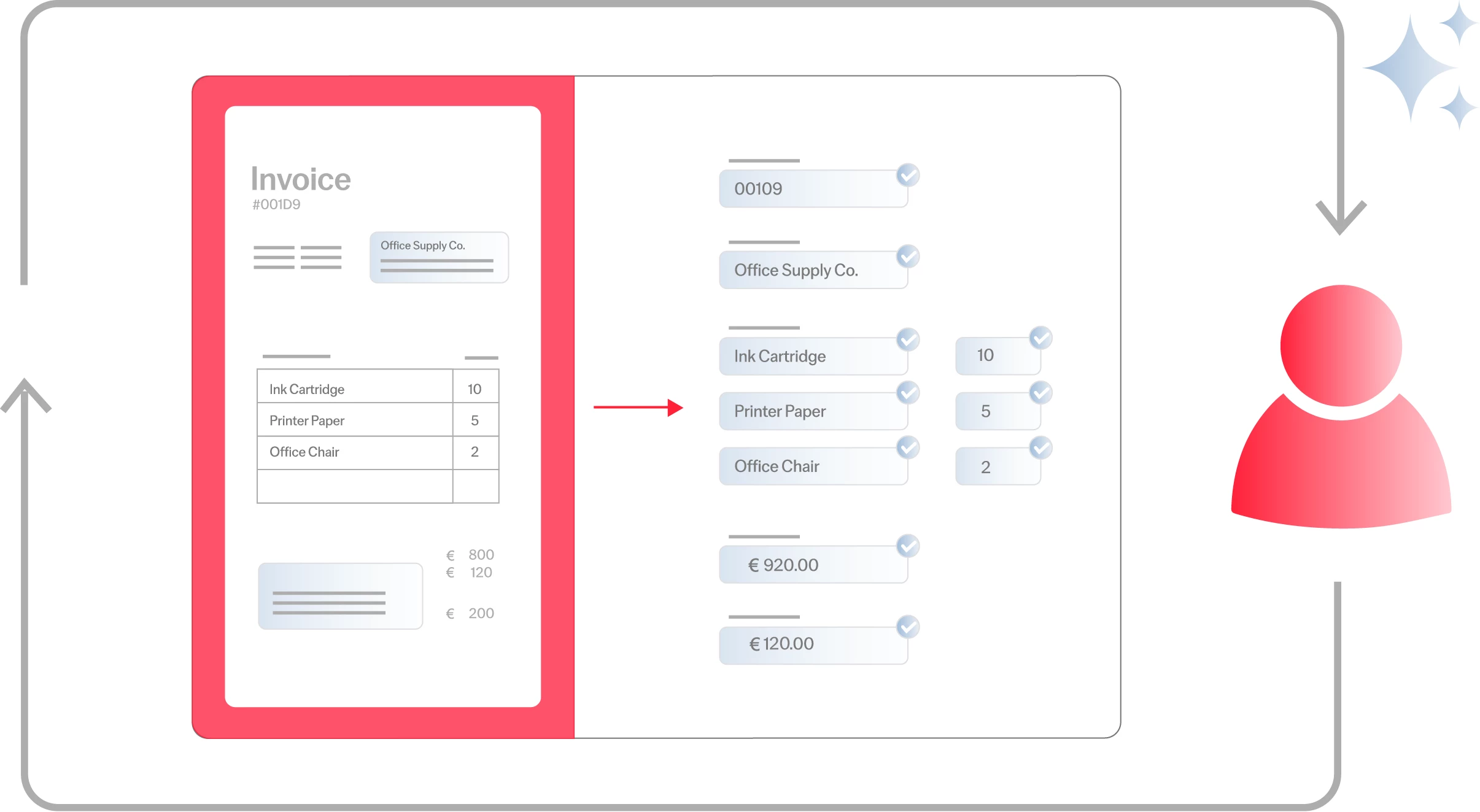
Learn more about manual verification
AI at the Crossroads: Innovating at Speed, Evolving with Responsibility
For many organizations, the question isn’t whether to invest in AI innovation, but when and how. In this article Ulf Persson, CEO of ABBYY, discusses the findings of our State of Intelligent Automation Report.

What Is AI OCR, and Why It Matters
OCR solutions have come a long way, incorporating AI, machine learning, and natural language processing to deliver modern intelligent document processing solutions—capable of understanding and extracting data from any document.

How to Use the ABBYY Vantage Analytics Dashboard for STP Optimization
This comprehensive demonstration of the Quality Analytics dashboard in ABBYY Vantage shows how you can track the chain of documents that are being processed without human intervention over time (straight-through processing rate). Key points include tracking document processing, optimizing human-in-the-loop resources, adjusting data verification settings, and analyzing extraction accuracy.

AI at the Crossroads: Innovating at Speed, Evolving with Responsibility
For many organizations, the question isn’t whether to invest in AI innovation, but when and how. In this article Ulf Persson, CEO of ABBYY, discusses the findings of our State of Intelligent Automation Report.

What Is AI OCR, and Why It Matters
OCR solutions have come a long way, incorporating AI, machine learning, and natural language processing to deliver modern intelligent document processing solutions—capable of understanding and extracting data from any document.

How to Use the ABBYY Vantage Analytics Dashboard for STP Optimization
This comprehensive demonstration of the Quality Analytics dashboard in ABBYY Vantage shows how you can track the chain of documents that are being processed without human intervention over time (straight-through processing rate). Key points include tracking document processing, optimizing human-in-the-loop resources, adjusting data verification settings, and analyzing extraction accuracy.

Intelligent document processing pipeline
Dig deeper
The Intelligent Enterprise
How to Turn AI Potential into Measurable Business Results
Some businesses are aiming to deploy AI agents for simple, repetitive tasks where a rules-based system would be faster and more efficient understand why and how in this article.

The Intelligent Enterprise
The Race to Harness AI: Systems Design, Human Values, and Societal Norms
AI Ethics Evangelist Andrew Pery recommends organizations bridge the gap between innovation and compliance by adopting a layered approach to AI regulation that strikes a balance between innovation and potential adverse impacts.
The Intelligent Enterprise
What Are AI Agents, Really?
By combining memory, AI models, and systems integration, AI agents push automation further than ever before, showcasing how far we’ve come—and how much further we can go.
The Intelligent Enterprise
How to Turn AI Potential into Measurable Business Results
Some businesses are aiming to deploy AI agents for simple, repetitive tasks where a rules-based system would be faster and more efficient understand why and how in this article.

The Intelligent Enterprise
The Race to Harness AI: Systems Design, Human Values, and Societal Norms
AI Ethics Evangelist Andrew Pery recommends organizations bridge the gap between innovation and compliance by adopting a layered approach to AI regulation that strikes a balance between innovation and potential adverse impacts.
The Intelligent Enterprise
What Are AI Agents, Really?
By combining memory, AI models, and systems integration, AI agents push automation further than ever before, showcasing how far we’ve come—and how much further we can go.
Frequently asked questions (FAQs)
What types of tasks are ideal for HITL verification?
Can HITL verification be customized for specific industries?
Does HITL slow down processes compared to fully automated systems?
Why is HITL important in AI-powered document processing?
How does HITL document processing differ from fully automated processing?
Request a demo today!
Schedule a demo and see how ABBYY intelligent automation can transform the way you work—forever.







